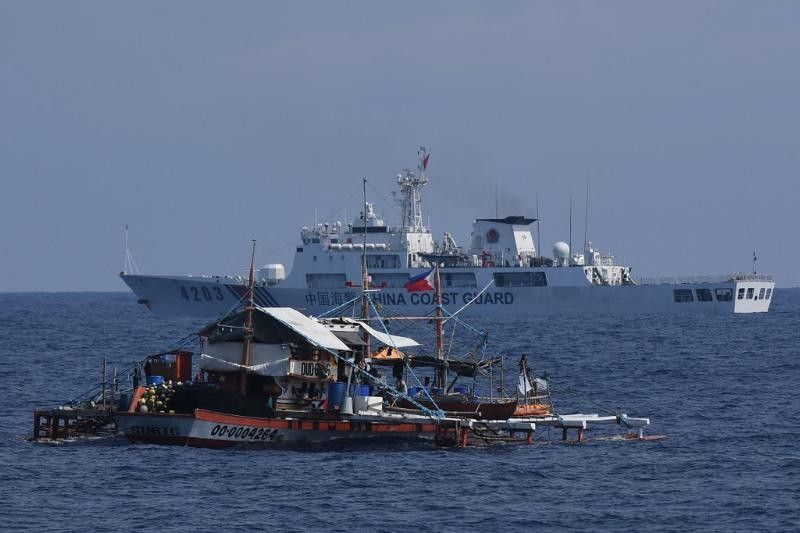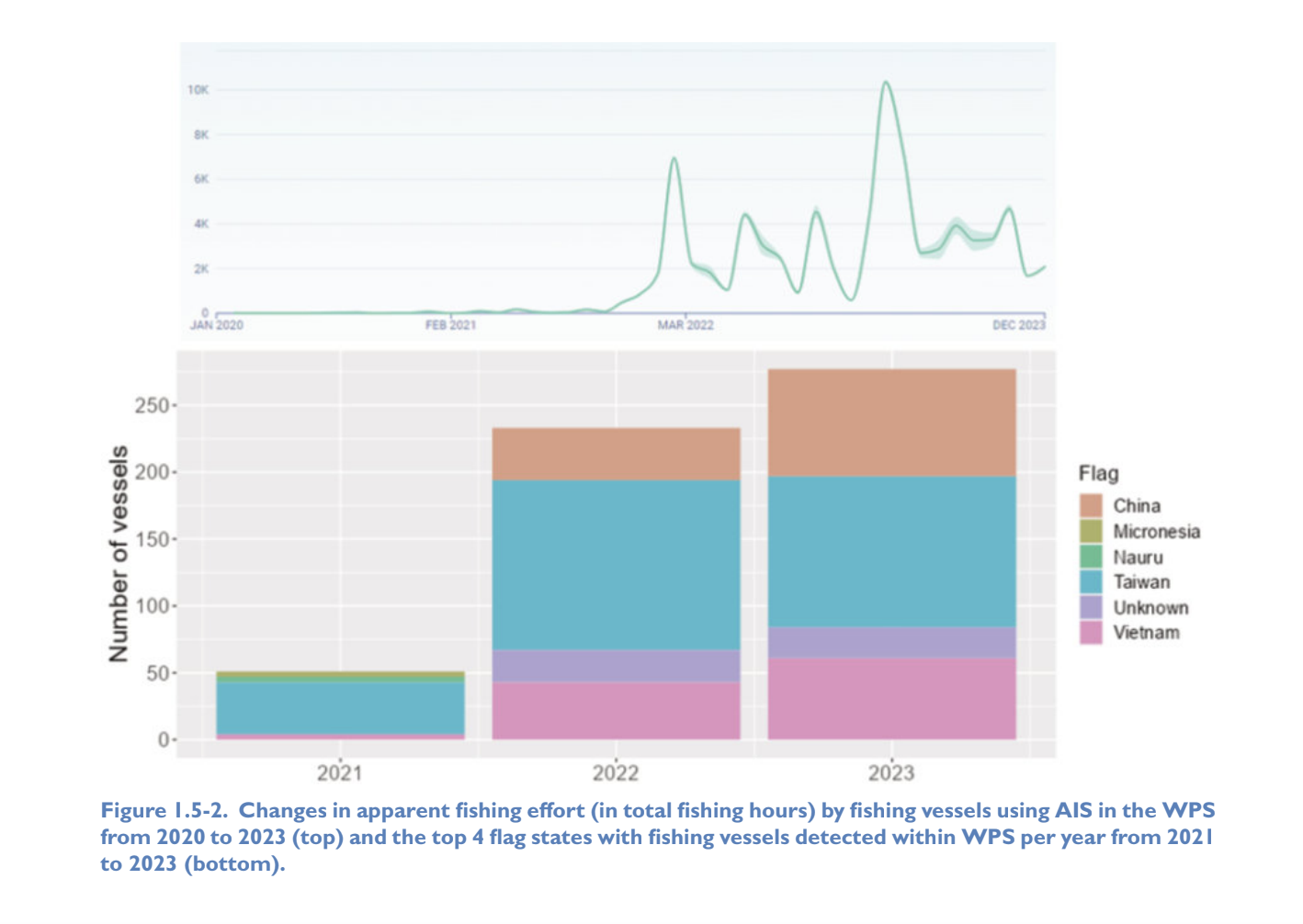Tracking systems fail to show extent of Filipino fishers' reliance on West Philippine Sea

MANILA, Philippines — Despite being a crucial fishing ground for scores of Filipino fishers, the West Philippine Sea (WPS) remains largely unmonitored, with global tracking systems in the dark about the true scale of Filipinos' fishing activities in the area.
Filipino fishers, who mostly use small fishing boats, are invisible or outnumbered by foreign vessels in the resource-rich WPS based on spatial and satellite trackers, according to a study by fisheries analyst Rollan Geronimo of the United States-based University of Hawaii.
This means the Philippines is "not able to demonstrate to the world how it is utilizing fishery resources in the area," Geromino wrote.
Geronimo's study is one of 13 articles included in the "West Philippine Sea: State of the Coasts" report by the University of the Philippines Marine Science Institute, which was released on Tuesday.
The research highlights the dominance of foreign fishing vessels in the WPS as shown by data from two main vessel tracking systems: the Automatic Identification System (AIS) and the Visible Infrared Imaging Radiometer Suite (VIIRS).
The AIS relies on transponders installed on ships to broadcast identifying information about vessels. The system mostly tracks large industrial boats as smaller fishing vessels may not always carry AIS transponders. Some boats also turn off their AIS transponders, known as going dark at sea, to conceal their location and identity.
Meanwhile, the VIIRS is a sattelite-based sensor that detects lights emitted by fishing vessels at night. Unlike the AIS, VIIRS cannot identify the vessels' flag or size, making it difficult to ascertain the flag of the vessels entering Philippine waters.
Both systems show that Filipino vessels are outnumbered by foreign vessels entering the Philippines' exclusive economic zone.
"Both AIS and VIIRS indicate what appear to be foreign fishing vessels operating in the WPS, some of which had even been observed approaching the Babuyan Islands in the past," the study said.
"More surprising, however, is that we do not detect Philippine-flagged fishing vessels on AIS," Geronimo wrote.
Too, tracking by the VIIRS shows that "there is greater movement of vessels from outside the Philippine EEZ into the country rather than the other way around, indicating that these are also likely foreign-flagged vessels," the study added.
Taiwan, China-flagged vessels appear most often in AIS
Data processed by Global Fishing Watch, an international non-profit organization, show that most fishing vessels using AIS are crowding in the northwestern portions of the WPS.

From January to December 2023, vessels flagged to Taiwan (38%), China (27%) and Vietnam (20%) accounted for 85% of the 298 fishing vessels observed operating inside the WPS.
At least 58% were likely using drifting longlines, according to GFW’s models classifying fishing type based on the patterns of the vessel tracks.
Geronimo noted that some vessels will often try to hide their fishing locations from competition by turning off the AIS.
"There may actually be more industrial fishing vessels operating in the WPS than the data suggest, because some vessels may not have AIS on board, or turn their transponders off when inside the region, or are missed by satellites and data towers because of the high volume of vessels and data traffic in the area," the study said.
"What is clear is that, while we know that Philippine-flagged fishing vessels do operate in the WPS, we do not see any of them on AIS," the study added. "It appears that only foreign-flagged fishing vessels use AIS in the WPS."
Meanwhile, data on nighttime lights detected at sea shows a shift in the number and location of fishing activities in the WPS.
From 2015 to 2019, most fishing vessels with lights were concentrated closer to shore, particularly in northern Luzon near the Babuyan Island and along Palawan.
However, since 2021, there's been a marked increase in activity around the Kalayaan group of islands and the northwestern borders of the Philippines' EEZ.
Based on the VIIRS, the number of vessels with lights in the WPS has decreased slightly in recent years, especially during the COVID-19 pandemic.
Signal jammers
In February, Philippine Coast Guard (PCG) spokesperson Jay Tarriela accused Chinese ships of using signal jammers at the Bajo de Masinloc to prevent Philippine vessels from transmitting their location through the AIS.
The PCG spokesperson said China is likely using this tactic to mask its presence in the area and create the false impression of driving away Filipino forces.
Despite escalating skirmishes with Chinese vessels in the tense waterways, the Philippines reported its highest fish catch in the WPS in 2023 than in the last four years.
According to the Bureau of Fisheries and Aquatic Resources, the country hauled in over 200,000 metric tons of fish from the WPS in 2023, a 15% increase compared to the previous year.
China claims almost the entire South China Sea, including parts considered the West Philippine Sea, and has repeatedly dismissed the 2016 international ruling that its claims have no legal basis.
— with reports by The STAR / Jasper Emmanuel Arcalas
- Latest
- Trending
































